Suspect Inversion Center (SIC) by Paul Vanouse, 2011--present |
Vanouse projects |
| Suspect Inversion Center (SIC), builds on conceptual, aesthetic and technological observations from Vanouse’s previous work involving DNA imaging (Relative Velocity Inscription Device and Latent Figure Protocol), but shifts the focus to the ways in which DNA can be extracted, amplified, fragmented and imaged photographically. SIC also addresses the misnomer of the term "DNA Fingerprint" to describe this process, a term that has misled laypeople to think of DNA images as being some essential, unchanging identifying glyph like that from their fingertip. There is much at stake in the public and jury believing this misnomer. Prosecutors generally exaggerate the accuracy of forensic DNA images. And as one FBI forensics chief explained “we want the term DNA Fingerprinting to cement in the mind of the jury that we are identifying one individual to the exclusion of all others.” In reality the DNA image can vary depending on which of hundreds of different biological probes and enzymes are used by laboratories to fragment DNA bands. | 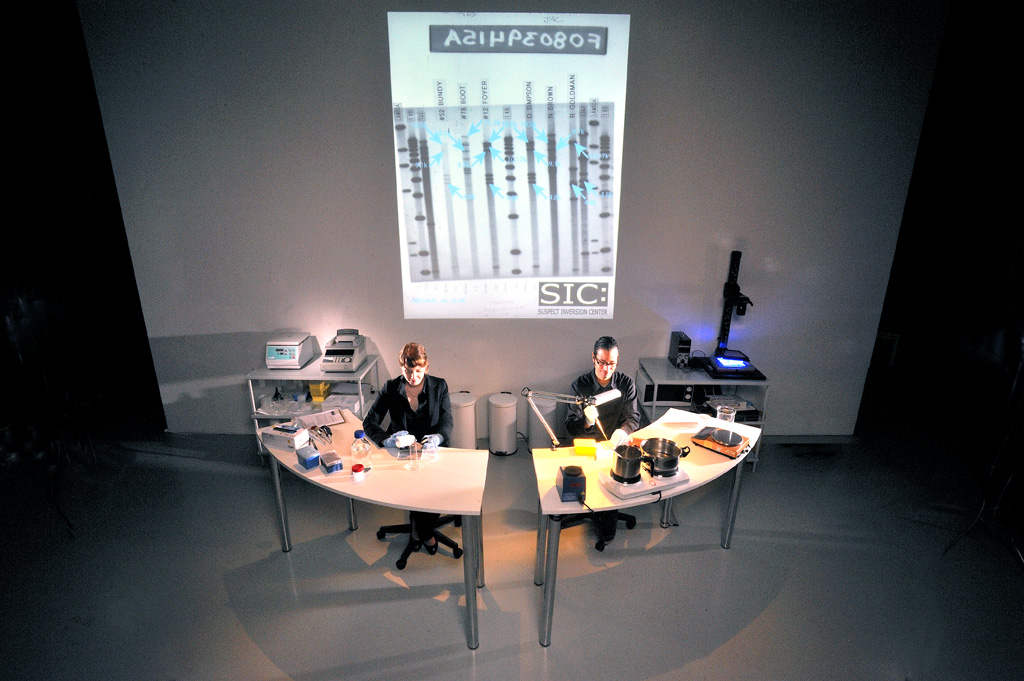 Suspect Inversion Center, Ernst Schering Foundation, Berlin, Germany. Paul Vanouse and Kerry Sheehan performing, January, 2011. Photo by Axel Heise. |
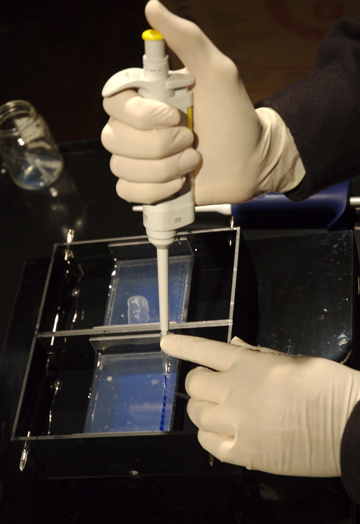 Vanouse inserting DNA into electrophoresis gel. Photo by Joan Linder. |
Just as the term DNA fingerprinting has led to misinformation regarding its efficacy, DNA evidence is also hyperbolized in popular culture. The “CSI effect” is a reference to the phenomenon of shows such as the CSI franchise overstating the accuracy of forensic techniques, and exaggerating the abilities of forensic science. SIC is designed to creatively counter these mass-media dramatizations that typically misinform the public, and in so doing, provide audiences with the conceptual tools to understand current issues surrounding use of DNA imaging and databasing. |
| Suspect Inversion Center (SIC) serves as an open working laboratory where, witnessed by visitors to the exhibition, the artist and collaborators create master copies of historical DNA courtroom images from the 1995 OJ Simpson murder trial: live, on-site, using the artist’s own DNA. The installation consists of semi circular lab tables and shelves containing all the necessary equipment to perform the activities of the Suspect Inversion Center. Vanouse and collaborators continuously perform the work during daily gallery operations. When the work is complete and the original DNA image has been reasonably accurately reproduced, the “reverse-engineered” copy and the original will be displayed side by side, along with the full chemical “recipes” used to create the images. SIC invites the audience to observe each step of the laboratory process and interact with the experimenters. | 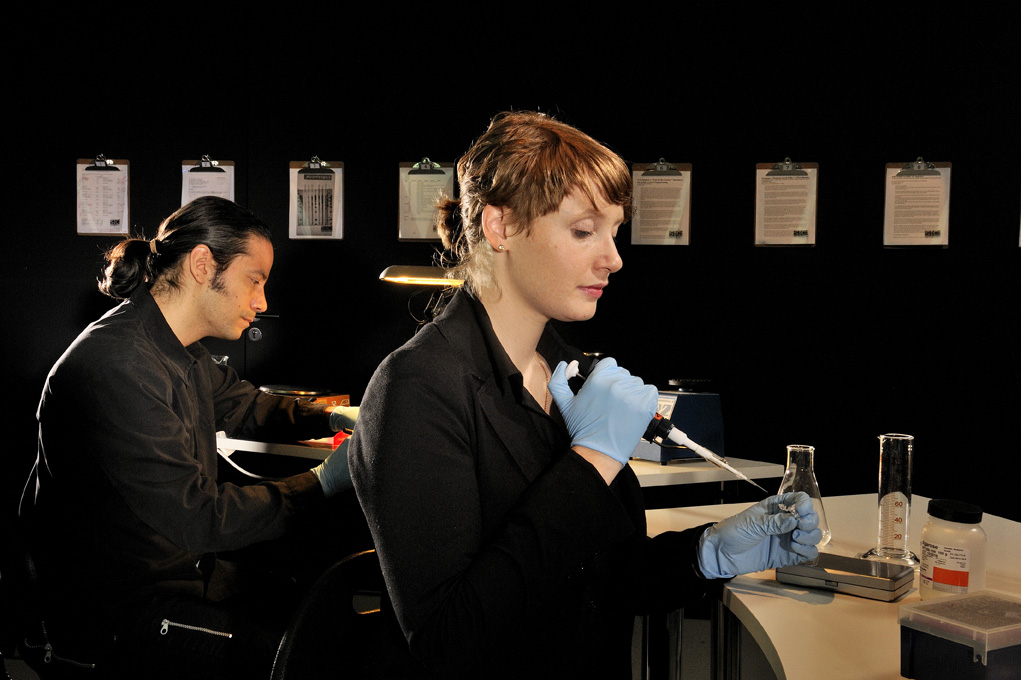 Paul Vanouse and Kerry Sheehan performing SIC. Photo by Axel Heise. |
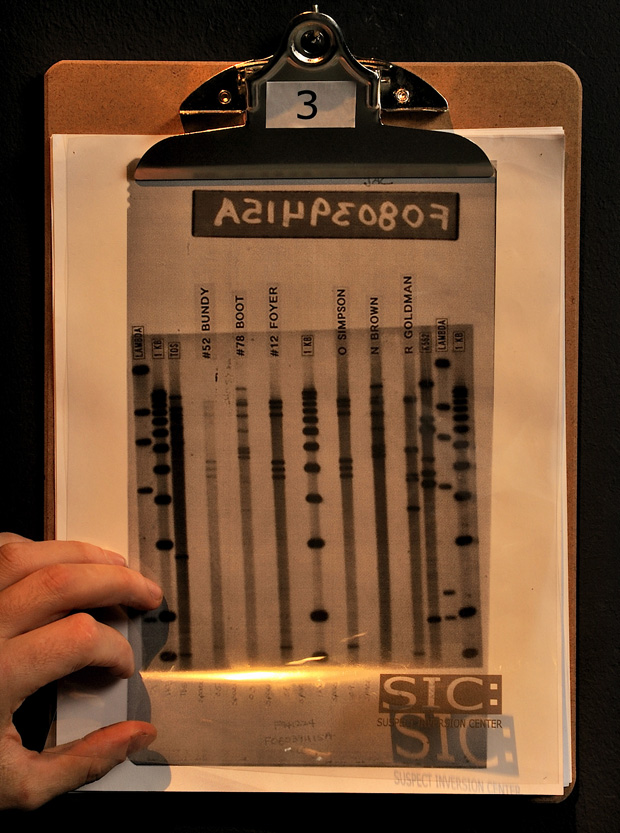 The original DNA image that SIC will be attempting to recreate. Photo by Axel Heise. |
What is most conceptually interesting about the images that will be produced through Suspect Inversion Center is that the artist is not simply making his DNA look like the original suspect DNA, but is using his own DNA to recreate an entire historical DNA document by scrutinizing every component of the authoritative DNA artifact. The history of art is replete with such intentional reproduction: from students’ copying a master’s painting, to art forgeries, to pop and postmodern appropriation, but of course each has radically different connotations and affects upon the “original”. The master study is a practice of reverence of the artifact by which both its authority and auracity are amplified. The art forgery is a practice of indifference in which these qualities are leveraged, but apolitically destabilized, indicted in anachronistic complicity. The appropriation cheekily negates the authority of the original and makes auracity irrelevant. |
| Constructing temporary organizations, even scientific ones, also has a history within critical, performative artistic practices. SIC is somewhat unique among these as it is neither simulating nor parodying scientists or scientific techniques. The artist and collaborators perform actual experiments and expect real results. The organization is not overly self-conscious of uniforms, nor are there any extraneous scientific paraphernalia on-site—as the purpose is not to frighten, nor impress but to demonstrate how the process works that is so central to our critique and to perhaps motivate others to investigate their own socio-scientific concerns. | 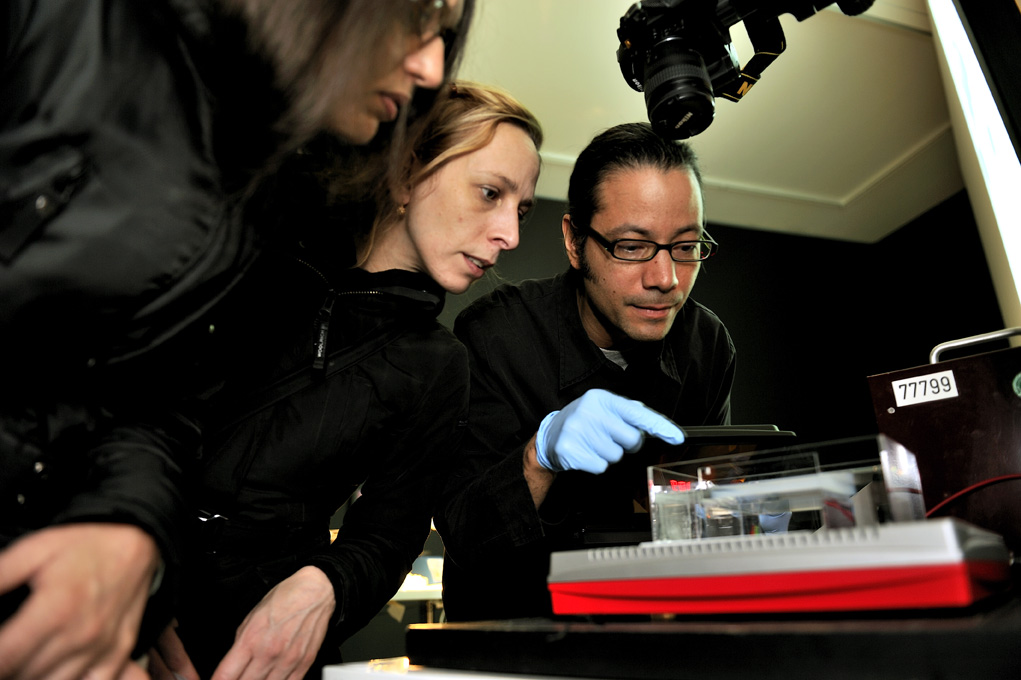 Vanouse explaining gel electrophoresis to visitors. Photo by Axel Heise. |
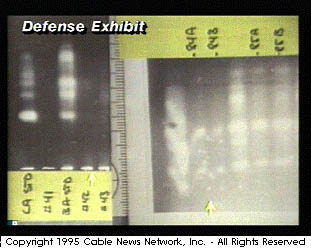 TV screen shot. However during the trial most TV viewers saw only promotional images from companies analyzing DNA (as they were less complicated) not the actual trial images as shown at top of this page. |
Suspect Inversion Center takes on the connotations of a once-removed performance re-enactment of a significant event in American collective memory, similar in this way to Ant Farm and T.R. Uthco’s The Eternal Frame. Dubbed “The Trial of the Century”, the murder trial of OJ Simpson has been called the most publicized criminal trial in American History. As the media-saturated trial of Simpson unfolded, millions of viewers, listeners, and news readers were introduced to the first public debate surrounding DNA evidence and it’s potential fallibility. The case represents a pivotal moment in the history of DNA in the public imagination. The OJ Simpson murder trial was the first time that a defense team had enough scientific understanding and authority to successfully counter prosecution claims of efficacy in criminal court. |
SPECIAL THANKS:
Kerry Sheehan